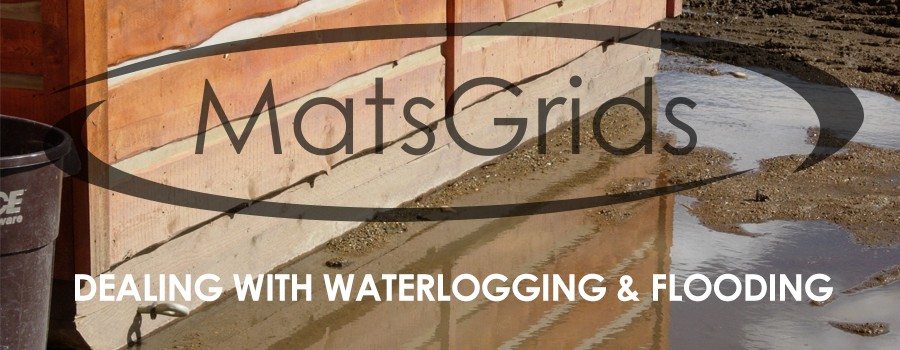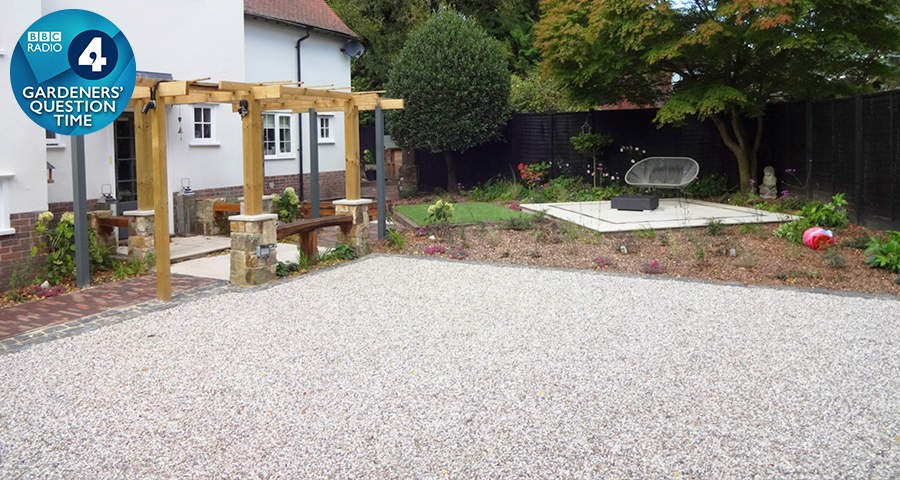How to Reduce Flooding & Water-logging Around Your Home
Water-logging and flooding is a disaster for plants and few will survive prolonged periods of inhabiting saturated ground. However, if your garden is prone to water build up, it doesn’t have to be the end of the world as there are various techniques that can be used to improve conditions and promote natural drainage.…
What is Water-logging?
When water builds up to the point when it’s no longer able to drain away, the soil becomes waterlogged. This means that there are no air spaces in the soil and consequently the water is unable to drain away naturally. This isn’t just bad news for the ground though, it’s bad news for your lawn and plants too as they’ll essentially be drowning at the roots.
Symptoms of Water-logged Ground
When it comes to diagnosing your plants, it’s not always easy to single the symptoms of waterlogging out but as a rule, you should look for the following:
- Yellowing or decaying between the veins on the leaves
- You’ll find soft areas at the centre and/or base of the leaf
- The plant could look as though it’s lacking water – it may even start to wilt
- Newly formed shoots could die due to lack of moisture – it’s ironic, but too much water actually prevents the roots from carrying water to the leaves
- Herbaceous plants may not sprout, alternatively, their leaves could open and then die
The symptoms of waterlogged plants are often confused with those of water stress and for very good reason. The truth is, a waterlogged plant is water stressed – on the surface at least – because its waterlogged roots are unable to supply the leaves with the essential water and nutrients they need.
How Does Water-logging Affect Plants?
Too much water can cause all kinds of problems for delicate garden plants and here are just a few:
- During the winter months, it’s much more likely for plants to survive waterlogged soils because roots require far less oxygen to survive
- Waterlogging seriously limits the oxygen supply to the roots and, as a consequence, prevents carbon dioxide from diffusing also. This causes root systems to die and decay organisms to invade the plant
- Waterlogged soils cause the collapse of natural drainage routes as all of the oxygen is removed. This means that each time it rains even more water will build up on the ground’s surface
Short Term Control
There are a number of short and long term techniques that can be used to control and restrict the effects of waterlogged ground.
- After a heavy downpour or flooding it’s a good idea to collect any debris that’s been left behind, as well as washing down hard surfaces. This is a quick and easy way to prevent the blockage of drainage systems and soil surfaces being covered
- Keep away from the soil until it’s had the chance to recover. By walking over saturated soil you’ll compact the ground and therefore worsen the conditions
- Take care to remove any already damaged shoots from your plants
- It’s common for dry spells to follow flooding so it’s essential to thoroughly water your plants during these periods in order to ensure they receive enough moisture as, after a period of flooding, plants are more susceptible to drought stress.
Long Term Control
If your garden is prone to flooding and waterlogged areas then long term control will almost certainly be far more beneficial.
With just a few small changes to your garden you should feel the benefits of improved drainage and less worry almost straight away.
- Improving soil structure and drainage might seem like a daunting task but it’s surprisingly easy thanks to specialist products like X-Grid. X-Grid can be laid and packed with soil and finally grass seed and is one of the best, environmentally friendly, cost effective drainage solutions available. The cellular design of each individual grid promotes natural drainage and helps to reduce the buildup of surface water, consequently reducing the risk of flooding
- Grow plants in a raised bed as this provides a much deeper drainage channel – which is much less likely to collapse – to the ground
- It’s not just grass that’s affected by flooding, quite often the effects are far worse for hard surfaces. Be sure to use permeable surfaces when laying driveways, paths and patios in order to ensure natural drainage is promoted, rather than hindered. X-Grid is perfect for this purpose also. As X-Grid can be filled with gravel, soil and grass seed, bark and a selection of other materials, they make the perfect permeable paving surface for driveways and patio areas prone to flooding because of a lack of drainage
- Ensure the trees and plants you choose to nurture are well suited to wetter soils





Is there someone who can survey and find the cause of waterlogging in a back garden?
Hi Joseph,
Unfortunately, we cannot suggest anyone who would be suitable to survey your garden. We would recommend searching online for a trusted contractor who is local to yourself.